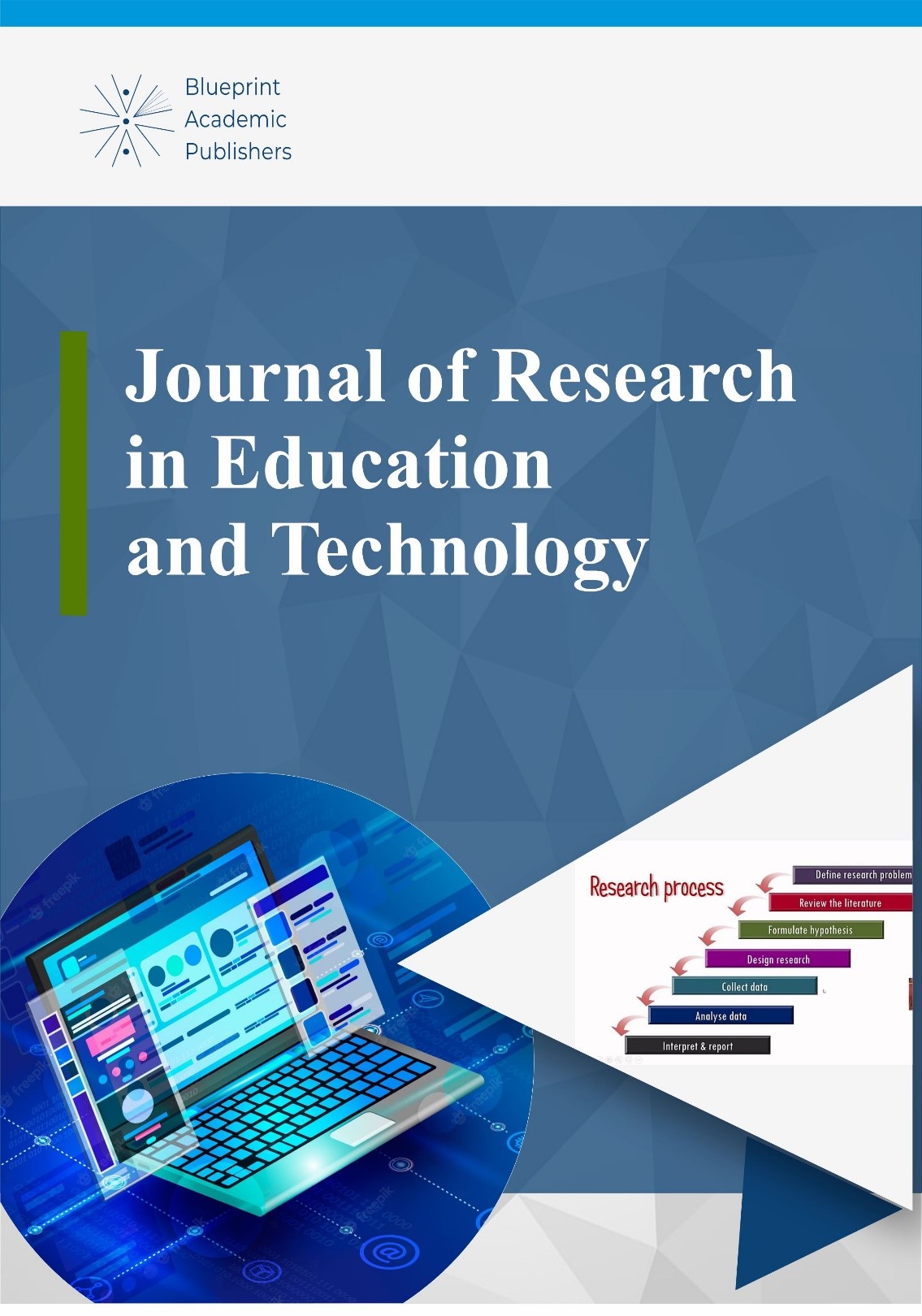Influence of Blended Family Structure on Academic Performance of Adolescent Students in Selected Secondary Schools in Baringo North Sub-County, Kenya
Main Article Content
Keywords
Adolescent, Blended Family structure, Intact family, Academic performance, students
Abstract
Families provide a conducive environment which necessitates acquisition of self-concept, self-confidence and self-efficacy amongst adolescent students in secondary schools in Kenya. However, the increase in non-marital childbearing, cohabitation, divorce and remarriage have ushered in a host of changes to the traditional construct of the family. This has led to the emergence of non- traditional family forms such as the blended family systems. These family changes adversely impact the academic performance outcome of adolescent students in secondary schools in Kenya. This study examines the influence of blended family structure on academic performance in selected secondary schools in Baringo North Sub County. The study was guided by John Bowlby’s Attachment Theory (2009). Concurrent mixed method research design was employed in the study and the study targeted 370 respondents; 350 adolescent students and 20 teachers. Stratified random sampling was applied to capture proportional representation of students from blended and intact family households across different school categories. Quantitative data were collected through structured questionnaires and academic records, while qualitative data were obtained through focus group discussions and key informant interviews with teachers and guidance counselors. Quantitative data were coded into SPSS version 26 and analysed using descriptive and inferential statistics while qualitative data were thematically analyzed. The findings revealed a significant positive correlation between both intact family structure (r=0.417, p<0.01) and blended family structure (r=0.356, p<0.05) with academic performance, suggesting that family background is a strong predictor of student success. Students from intact families reported the highest, most consistent levels of academic support from both parents, fostering a highly positive academic environment. However, students from blended families reported facing complexities, notably inconsistent or lower support from stepparents, but demonstrated resilience. Their academic outlook remained positive due to strong motivation from their biological parent, high support from siblings, and a significant compensatory role played by teacher concern. The study concludes that while the intact family structure provides the most seamless academic support, the ultimate success of adolescents in blended families relies heavily on a supportive network involving the biological parent, siblings and dedicated educators. The findings emphasize the need for targeted interventions in schools, including specialized teacher training and counselling, to effectively support students navigating complex family transitions.
References
Ainsworth, M. D. S. (1982). Attachment: Retrospect and prospect. In C. M. Parkes & J. Stevenson-Hinde (Eds.), The place of attachment in human behavior (pp. 9–30). Basic Books.
Ainsworth, M. D. S., Blehar, M. C., Waters, E., & Wall, S. N. (2015). Patterns of attachment: A psychological study of the strange situation. Psychology press. https://doi.org/10.4324/9780203758045
Amato, P. R., & Keith, B. (1991). Parental divorce and the well-being of children: a meta-analysis. Psychological bulletin, 110(1), 26. https://psycnet.apa.org/fulltext/1991-32830-001.html
Bean, R. C., Ledermann, T., Higginbotham, B. J., & Galliher, R. V. (2020). Associations between relationship maintenance behaviors and marital stability in remarriages. Journal of divorce & remarriage, 61(1), 62-82. https://doi.org/10.1080/10502556.2019.1619385
Bengesai, A. V., & others. (2020). The association between family structure changes and schooling outcomes. Social Sciences. https://www.mdpi.com/2076-0760/9/8/133.
Bowlby, J. (1951). Maternal care and mental health. World Health Organization. https://pages.uoregon.edu/eherman/teaching/texts/Bowlby%20Maternal%20Care%20and%20Mental%20Health.pdf
Bowlby, J. (1969). Attachment and loss: Vol. 1. Attachment. Basic Books.
Bowlby, J. (1969). Attachment and Loss: Vol.1. Attachment. New York: Basic Books.
Bowlby, J. (1973). Attachment and loss: Vol. 2. Separation: Anxiety and anger. Basic Books.
Bowlby, J. (1980). Attachment and loss: Vol. 3. Loss: Sadness and depression. Basic Books.
Bowlby, J. (1988). A secure base: Clinical applications of attachment theory. Routledge.
Bowlby, J. (2018). The nature of the child’s tie to his mother 1. In Influential Papers from the 1950s (pp. 222-273). Routledge. https://www.taylorfrancis.com/chapters/edit/10.4324/9780429475931-15/nature-child-tie-mother-1-john-bowlby
Carranza, L. V., Kilmann, P. R., & Vendemia, J. (2009). Links between parent characteristics and attachment variables for college students of parental divorce. Adolescence, 44(174).
Cherry, K. (2023). What is attachment theory? The importance of early emotional bonds. Very Well Mind, 22.
Ermisch, J. F., & Francesconi, M. (2001). Family structure and children's achievements. Journal of population economics, 14(2), 249-270. https://doi.org/10.1007/s001480000028
George, C. M., & Fernandez, M. S. (2014). A case study of a stepfamily’s relationship experiences before and after the death of a custodial biological parent. The Family Journal, 22(2), 258-264. https://doi.org/10.1177/1066480713513556
Gilbreath, V. (2018). Family structure and academic achievement in blended households. Liberty University Digital Commons. https://digitalcommons.liberty.edu/cgi/viewcontent.cgi?article=2770&context=doctoral.
Ginther, D., & Pollak, R. A. (2004). Family structure and children’s educational outcomes: Blended families, stylized facts, and descriptive regressions. Demography, 41(4), 671–689. https://doi.org/10.1353/dem.2004.0031
Iheaka, J. E. (2022). Influence of family structure on students’ academic achievement. Nnadiebube Journal of Education in Africa. https://acjol.org/index.php/njea/article/download/3070/3020.
Jeynes, W. (2010). Parental involvement and academic success. Routledge.
Lanyasunya, R. (2024). Family-related influences on KCSE performance in selected schools. Journal of Humanities and Social Sciences. https://www.journals.editononline.com/index.php/jhss/article/view/674.
Nato, (2016). Analysis of family structure influence on academic performance among secondary school students in Bungoma East Sub-County, Kenya. ResearchGate. https://www.researchgate.net/publication/304339277_Analysis_of_Family_Structure_Influence_on_Academic_Performance_Among_Secondary_Schoo
l_Students_in_Bungoma_East_Sub-County_Kenya.
Ngumbao, J. K, Kang’ara, H & Kamau, J. (2020). Influence of Blended Family Structures on Socio-emotional Development of Pre-Primary School Learners in Ganze Sub-County, Kilifi County, Kenya. International Journal for Innovation Education and Research. Vol.8 No 04 2020. 503-513
Njoroge, M., & Kirori, P. (Year). Blended family dynamics and academic performance: A case of Kabete Sub-County, Kenya. CORE. https://core.ac.uk/download/pdf/234691334.pdf.
O'Brien, F., Nixon, E., & Hadfield, K. (2023). Effects of preterm birth and parent–child relationships on socioemotional difficulties, verbal ability, and numerical ability among older children and young adolescents. Developmental Psychology, 59(4), 745. https://psycnet.apa.org/fulltext/2023-10464-001.html
Ohazulike, G. A. (2023). Nature, Changes, and Dynamics of Family Structures and Parenting in Nigeria: Its Implications on Children’s Socialization and Marriage. Zik Journal of Multidisciplinary Research, 6(1).
Sundstrom, M. (2013). The Complexity of Stepfamily Relationships using a large Swedish data set. Retrieved from https://core.ac.uk/download/pdf/234691334.pdf
Wachira, (2011). Adjustments of pre-primary learners from blended families in Nairobi. (Thesis/Report). Scholars Journal / Nairobi studies. https://scholarsjournal.net/index.php/ijier/article/download/2302/1645/7021.

